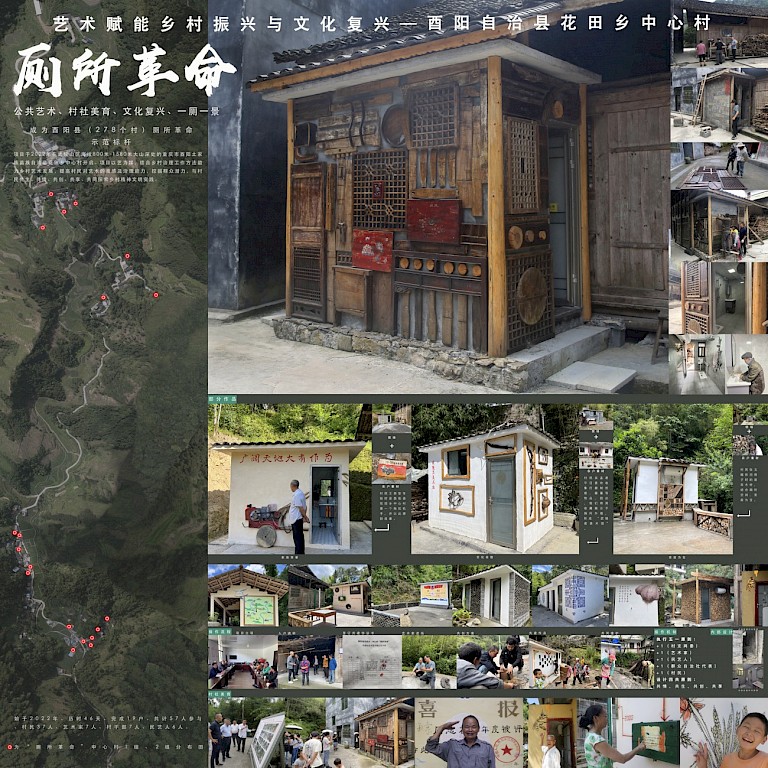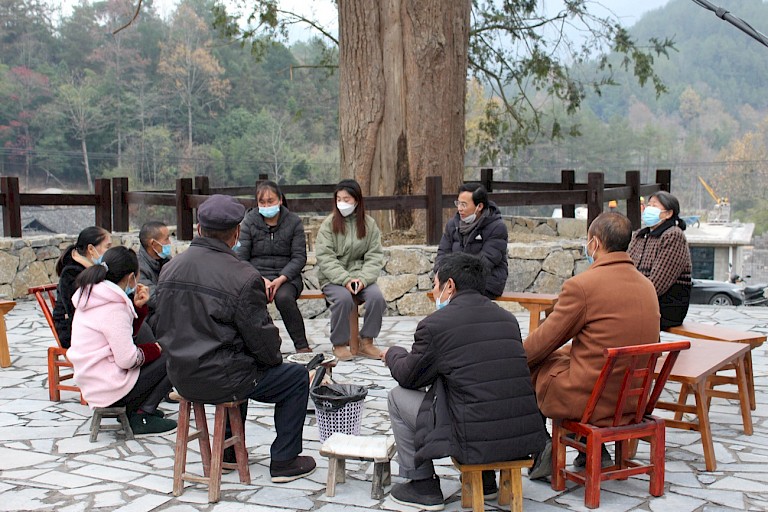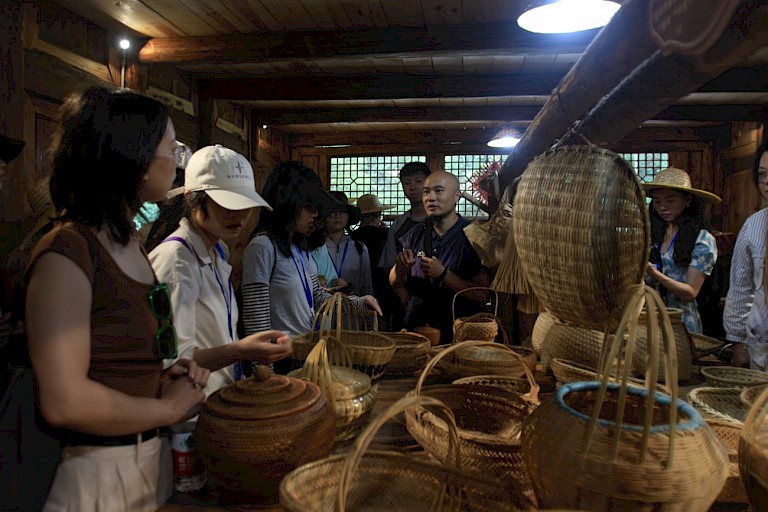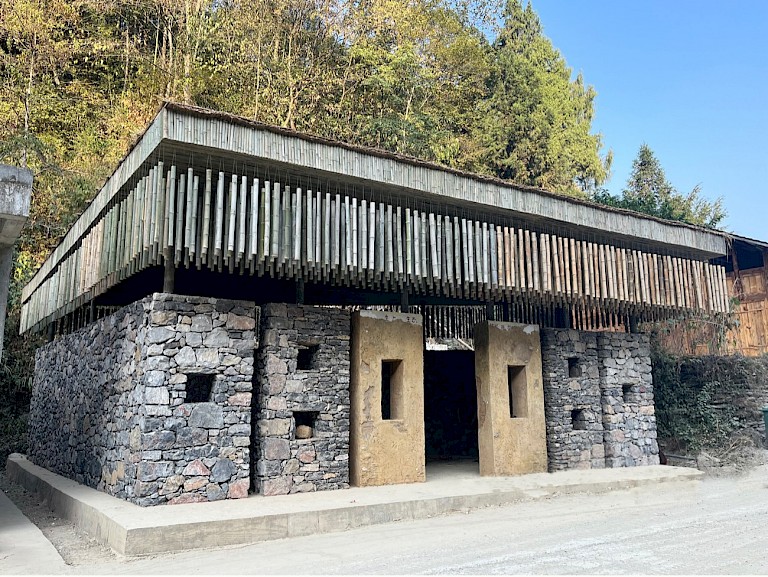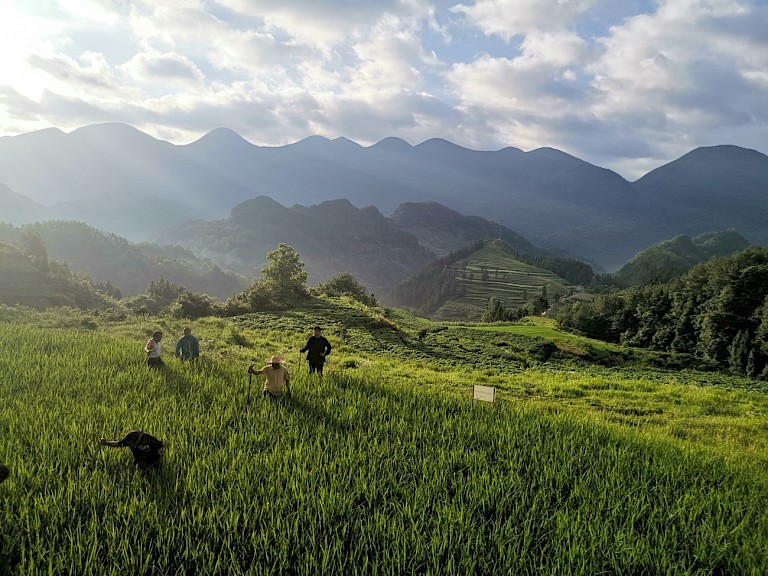



Thus far, The People's Fine Arts Institute has involved about 700 people in its activities, including; over 400 villagers, over 50 grass-roots cadres, over 20 experts in anthropology, sociology, life sciences, archaeology and other areas of expertise, as well as more than 200 students from a number of colleges and universities across the country.
Below are some outcomes of the action program of the PFAI:
Since the construction of the PFAI centre, the village has seen many changes (eg. traffic patterns, new businesses). This has resulted in a proposed special industrial development plan, attracting investment in agriculture, industry, business, culture, and tourism and other forces. Comprehensive, inclusive planning is taking place. Some examples are; a scheme for Agriculture, Forestry, Culture, Arts, Sports and Tourism Integration Development Plan and Implementation. Part of this planning involved an Alpine Peak Nest Community, The Wuling Centre Lacquer Art, International Art Community, A Wuling Mountain Orienteering Training and Tournament Base, and a blueprint of a Farmers Direct Picking and Helping Smart Industrial Chain.
Other outcomes include:
Packaging design for 20 different local agricultural products were developed, adding value and increasing sales. This lead to a positive shift in the village collective economy (moving from debt to a large budgetary surplus).
The transformation of the Wuling Mountain Area Lacquer Art Museum from an old, abandoned sanitary building. Here, 37 lacquer-cutting craftsmen in the village worked to refurbish and repurpose the space, while villagers worked and learned in apprenticeship. The building now also attracts artists to study and work on the premises.
A Toilet Revolution construction project: a 56-day activity of village beautification was carried out in the central village. Artists and villagers worked together to convert, modernise and refurbish 22 dry toilets at villager homes, and in public spaces.
A Folk Art Heritage Museum was built on abandoned land with local materials. The building design reflects the characteristic architectural forms of the region. It serves as a workshop for folk art crafts and a study centre for folk art education.
A Second China-Youyang Rural Art Season took place, with the participation of four colleges and universities in Chengdu and Chongqing. After 84 days of on-site creation, 41 art experts, representatives from government and enterprise, and 306 villagers participated in the program, creating 29 pieces of functional, ecological, artistic and interactive art works.
A team worked with villagers in the reclamation of a two acre Central Village Ecology & Art Experimental Field. The space is intended to foster interpersonal interactions among the villagers, through a revival of ancient traditional farming and cultivation methods.
The development of an interdisciplinary design think tank, involving experts from various fields, such as; archaeology, anthropology and sociology. This group focuses on five concerns; ecological restoration and rural ecological diversity, artistic rural construction, village community artistic education, alpine specialty agriculture, and rural habitat. Examples of projects under this scheme are; a Huatian Township guide signage design program, road traffic landscape art enhancement and ecological restoration in Hejiayan, calamus flower bonsai packaging design, centre village logo design, Hua Tian Township architectural style and human environment art enhancement design, farming Festival stage and scene design, etc.

